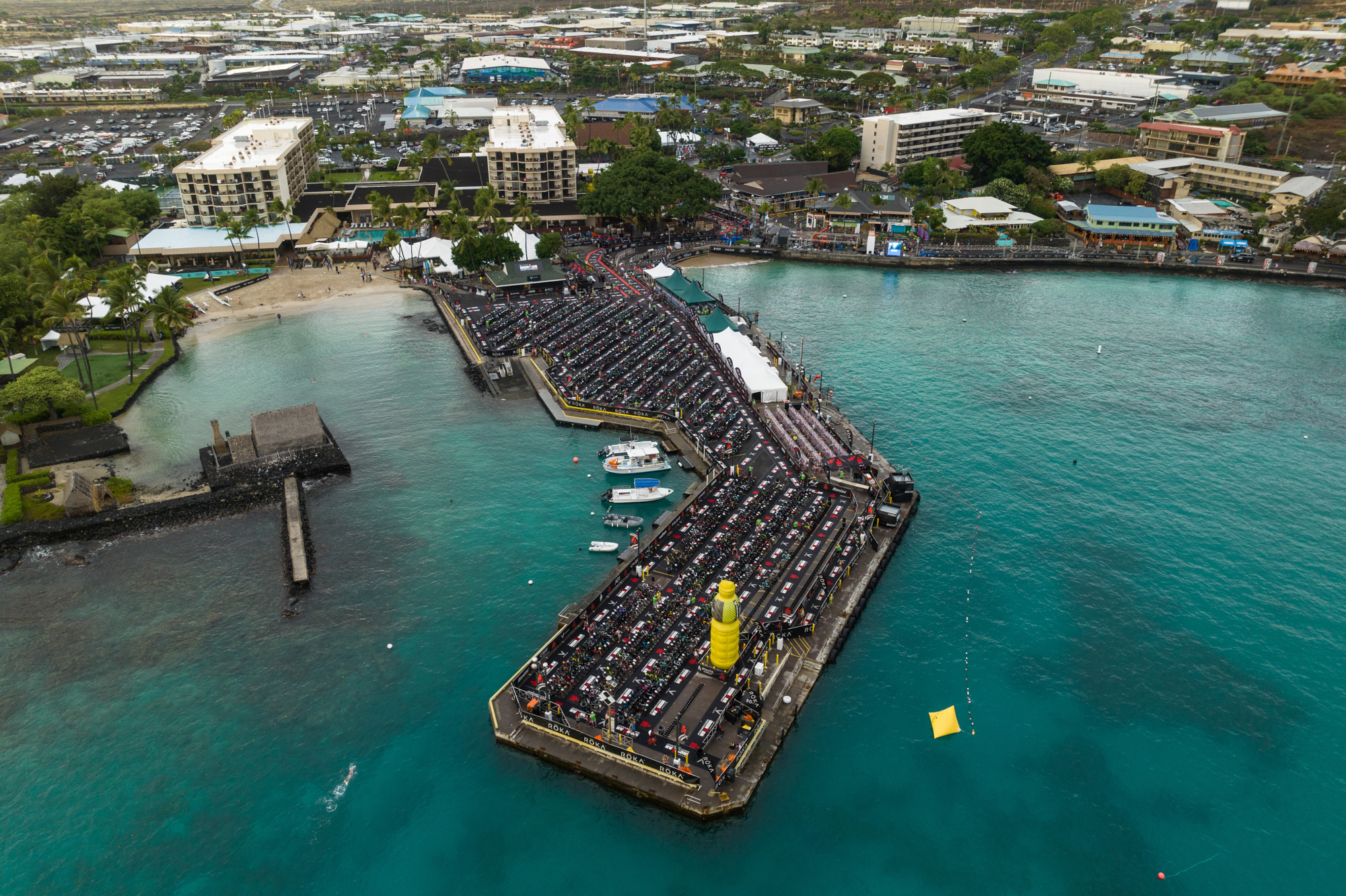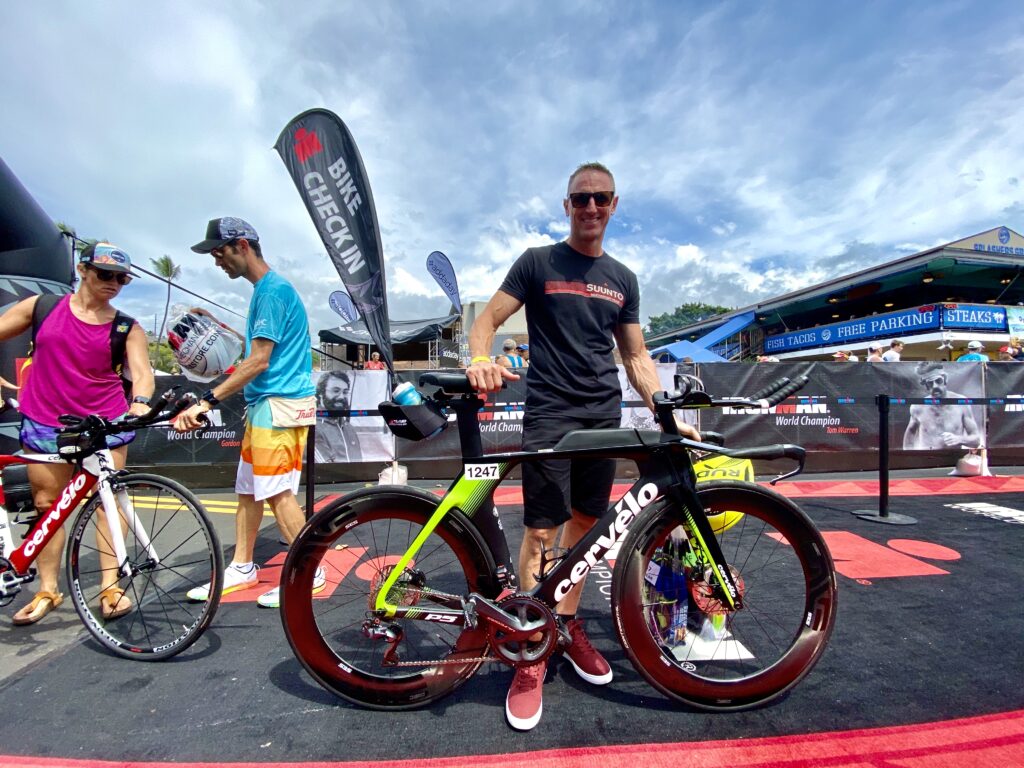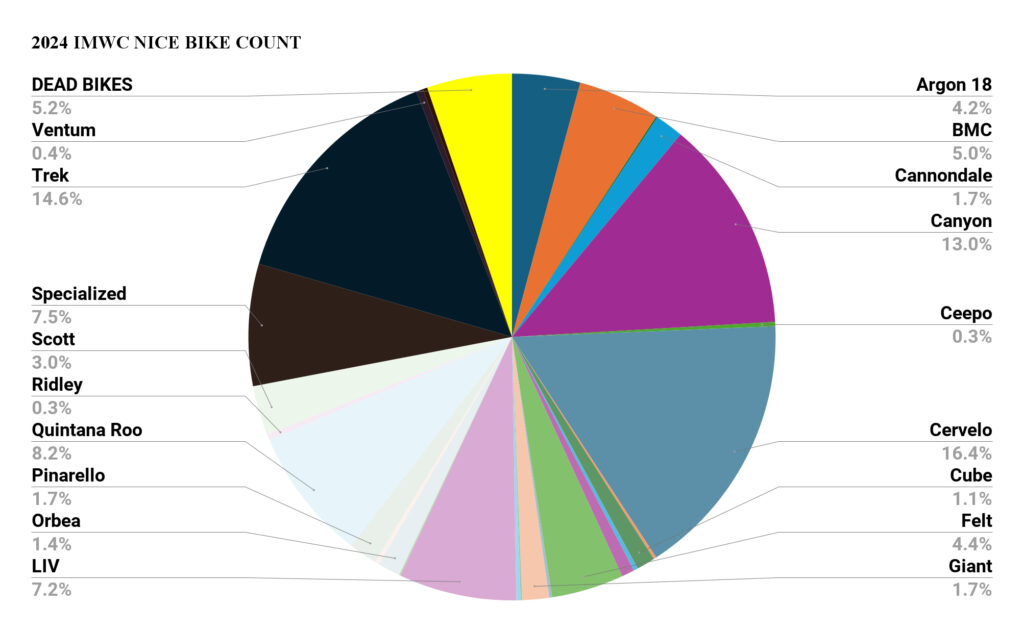Originally published at: 20+ Years of IMWC Bike Counts: What’s Changing, and the New Dead Bikes of Nice and Kona - Slowtwitch News

Every time we do the old famous Bike Count, it requires a lot of things and a lot of skilled people, all of whom are either volunteers or “voluntold” to do so. These fine humans, the day before the biggest race of the year, get to (instead of planning and resting up for the hectic day to come) hang out in the sun and spend hours hyper-focused on counting bikes, wheels, pedals, power meters, etc. So for about 8 hours, they and we get to catch up and try to have some fun doing it. And without these people, the count would never happen. I’m convinced that the bike count is the real reason we have the famous TGINR Party.
The count’s history goes back some 20 years. And because of that, the tools matched and have evolved with the times. They used to have clipboards, pens, paper, and sheets that looked like this.


The day would be filled with frantic counting and making sure you could catch a pee break without missing numbers. Then, everyone would gather around as we started counting the chicken scratch. Wet pieces of paper with ink all over were effectively turned into totals and then turned into percentages. Then, that was turned into data records and new articles. It was indeed a product of passion.
And for the most part, it was a somewhat bulletproof system (because of the people, not the process). Time passed, and the people who knew how to do it stopped going to Kona. Ironman was, at times, challenging to work with on access, and then all of a sudden, in 2022, we had two counts to do: Wednesday’s count for Thursday’s race, and Friday’s count for Saturday’s race, and the whole history of data was different. I left the massive 2-day adventure in 2022 and started to think on how we collectively do this more effectively. Starting last year, not only did we have a count that doubled in location, but it was 100% gender-specific and also geographically inspired.

For Kona 2023, I showed up with digital form links that allowed people to kill the paper and the manual counting. Ironman gave us a dedicated wifi access point with our own password, so those who wanted to use the digital form did what they did best: stared at their phones, clicked away, and then left 5 mins after they were done. Meanwhile the software spit out the results. We still had some of the “OG’S” that wanted to use pen and paper, so they counted in analog and we hung out after and helped tally the numbers. And by the skin of our teeth, we had our annual bike count. And 2023 was the most odd set of numbers from the norm we had ever seen. Why? Because for the first time in the history of the bike count, it was 100% gender specific, we could now start to understand what men and women valued most regarding their bike equipment.
About 4 months ago I really wanted to make the bike count a big thing again. We all did: the media, the industry, and, of course, our readers. So we went all in on it and committed to the process and committed to making it happen. Now it’s no secret that Nice isn’t as popular as Kona; everything about that race is just smaller. From the expo to the number of participants to, well, everything. That also rings true for the people that are willing (and can) do the count right. Only a few people on planet earth are willing to stand around for 6-8 hours that can actually see what type of saddle someone is riding and be able to record that in the 1-2 secs they have to do it in.
So we needed to tighten up what we knew we could do from a person counting perspective, but also, we needed to look at the data and figure out anything we needed to cut. As in, data that simply doesn’t matter anymore, or isn’t relevant. Looking back at the decisions we made for the count, we likely made mistakes on two things (maybe more, but these stick out). First, rim versus disc brake counts, and secondly, we shouldn’t have killed Merida from the bike count, even though they can’t really be sold in the US.
Consoldation = new important catagory
Now, as for removing bike brands — the dead bikes. What is a dead bike, you might ask? They made up about 5.2% of the total bike count at the World Championship in Nice. When looking at how we could do the bike count better, we realized we had to streamline things. Remember: less options = more accurate count. Looking at the data, bikes have the widest variety with 38 options of bike brands on the original count list. We felt that 11 of those shouldn’t be included anymore. Why? These are companies that, although they might still be in business, their focus has changed. TT or triathlon bikes are either not part of their consumer offerings, or they simply don’t focus on it anymore. This saves the counter time and energy, but it also creates a new and important category: dead bikes.
Those brands we decided to no longer include are:
- Kuota
- Fuji
- Merida
- Boardman
- Guru
- Garneau
- Kestrel
- Cipollini
- Planet X
- Stevens
- Blue
Now I know that Cipollini makes TT bikes, and Merida makes both a TT and triathlon bike, but the count of each has never really been meaningful to the totals. But after some additional information, I will put Merida back in for Kona.

Why does this matter? It matters because it shows us the unique purchasing choices of men and women. And after Kona we will be able to start to dive into that little bit more. But the fact that people are riding (as a whole) more bikes combined that aren’t even in our business anymore, versus some of the bike companies that are investing heavily into the endurance space is something to talk about.
Let’s take, for example, Cube. We have four time as many women riding bikes that are from companies no longer in business (at all) or in business in triathlon and are, at minimum, 4-6 years old, versus choosing to ride the bike that 2023 World Champion Lucy Charles-Barclay is riding and has been talking about for years now. Why is that? What is Cube doing wrong with its messaging, or design, for women? If we want women to be successful in this sport (which we do), we collectively have to be working towards helping them in a more significant way. And now one way we can do is within the data of the bike count.
With the ongoing relationship we have with tech and Ironman, we will be able to do more with less. That also means we’ll be able to cover more data and trends. We are also hoping this process, that as we refine it, anyone can use it for other races. We as well as other media outlets are looking forward to getting to Kona for what will be the first year where the combined resources will have data from both men’s and women’s races. And we’ll also have complete data, for the first time, after venues have flipped for each gender.
What will change? What will look the same? And we learned a lot from our first live count article, and we have that all sorted too.